21 Jan 2025
Updated on January 22nd, 2025
How Digitalization Is Transforming Australia?
Shaun Bell

Over the past decades, Australia has experienced a phenomenal transformation through digital technologies across sectors, driven by digital transformation in Australia. Whether it is a city or a village, technology is fast becoming the order of the day in most aspects of life. From e-commerce and the emerging rapid growth of telemedicine to the development of smart cities, digitalization is improving the efficiency of business processes and activities or their effectiveness and opening new options and problems, further fueled by digital transformation in Australia. The rise of mobile app development company is also playing a significant role in enhancing accessibility and delivering innovative solutions across various industries.
Australia, a country long associated with expansive terrain and a native pace, is now leading in high-tech advancement. The government has near universal telephone penetration and a well-established Internet environment to leverage digitization in addressing several of its major developmental issues, including isolation, health care, and employment mobility. Digitization is revolutionizing sectors, including consumption in cities, and hailing new opportunities in industries across the board in cities, while usage of internet solutions is expanding access to services in regional and remote areas.
From E-Commerce to Fintech: How Digitalization is Shaping Australia’s Future
New Technology and IT infrastructure are the backbone of this shift in Australia. The startup hubs have taken off and soon emerged among the fastest-growing tech hubs in the Asia Pacific, with the deployment of artificial intelligence, cloud, and automation for the Australian business’s relevance. Now, starting from e-commerce, which completely changed the concept of retail, up to fintech, which is transforming traditional banking, digitalization has brought enormous benefits in terms of efficiency, new opportunities, and ways to reach clients.
Besides business concerns, digitalization is intelligently transforming government services and covering areas of daily life. New e-health and telemedicine sectors provide many services to rural and remote areas where physical barriers have always existed. Government-wise, smart cities are making urban regions greener and more integrated, while digital platforms, on the other hand, are making Australians receive public services faster and better.
However, all these inventions have difficulties associated with them. This paper aims to discuss how, as a digitally interconnected country, Australia faces increased risks to cyber security and a rising digital divide.

What Is Digitalization?
Digitalization is identifying an opportunity to convert information, processes, or services to digital form and employing methods and tools such as technology to apply change to the opportunity to create improved value. This change process requires decentralizing technology usage into organizational processes and using digital applications and data structures.
Digitalization is not a simple task rationalization that aims to implement tools for automating processes; it is a process that redesigns companies’ ways of working and relating to customers. This can employ technologies like cloud, artificial intelligence, big data, and IoT and turn them into better, data-smart systems.
For commercial organizations, digitalization is efficient since it involves less time and effort and enables decision-making where intuition comes in alongside the ability to access information now and then. It also has the potential to improve customer satisfaction by helping organizations provide better services and do so quickly.
These sectors include retail, health care, finance, and manufacturing industries, which have greatly benefited from digitalization through enhanced flexibility, enhanced cost minimization, and the provision of new products and services.
Each of the mentioned fleets can use digitalization more broadly in different sectors of society, including education, communication, and governmental services. Overall, digital technology is the primary promoter of contemporary innovations, so companies and people must follow the ongoing evolution of the digital world.
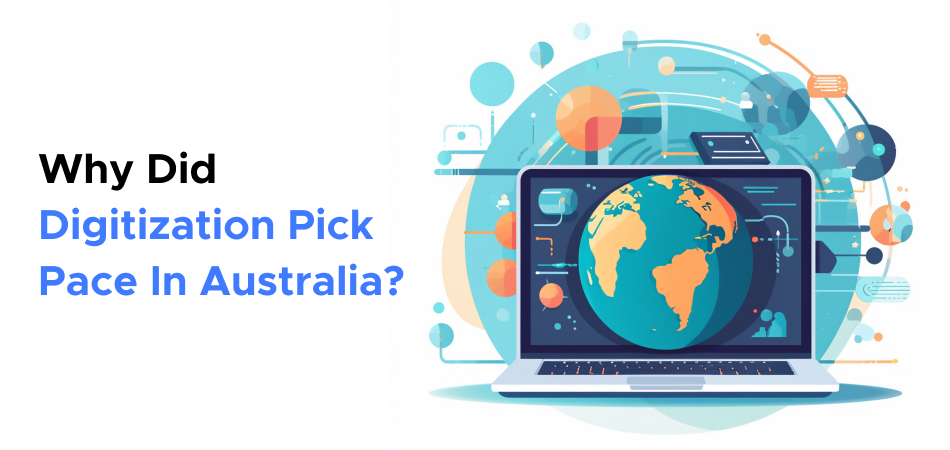
Growth Of Digital Transformation In Australia
Digitalization in Australia has become progressive and systematic in many areas of life. It has come to the last decade to recognize the countries and all innovations, particularly cloud, AI, and big data, that have been revolutionary to change different sectors in the countries’ economies, such as finance, healthcare, and retail, driven by digitalization in Australia. As a government agency, DTA has brought digital solutions and change to enhance sector public services.
In business, digital technology has been widely implemented among Australian companies to improve marketing, selling, and customer service processes. Thus, such novelties as e-commerce expanded the sphere of online business, which actively contributes to the Australian economy. The pandemic also deepened digital transformation, and remote working, remote learning, and telemedicine are now trendy.
This growth has also been driven by Australia’s strong digital ecosystem, which comprises a rich broadband internet connection and widespread smartphone use. The level of digital literacy and internet adoption is very high, and the country is well-positioned within the world’s digital economy.
Still, room for improvement has emerged, for instance, in providing cybersecurity measures, addressing the digital divide, and promoting innovation breakthroughs. However, Australia’s continuing trend towards digitization indicates its usefulness for the country’s economic progress and the population’s well-being in the following years.
Key Stats Showing Growth Of Digital Transformation In Australia
Statistics show that Australia is growing in the digitization index in different categories. The same source also indicated that internet usage in households by 2023 will be more than 86%, and broadband usage will be above 80%. This is a sound Internet connection for further Internet development in this country.
The growth of e-commerce in Australia has been prominent and incredible. In 2023, online shopping in Australia reached a value of AUD 60+ billion, with an increase of 20% yearly. This change is in sync with changes like retail est; established nesses are shifting online to cater to people.
The need for digital technologies in organizations has also increased rapidly in recent years. According to the Australian Digital Economy Strategy report published in 2022, 75% of the companies invested in cloud computing, and 58% embraced newer technologies such as AI and data analytics.
Digital services have enhanced or expanded in the public sector, with over 90% of governor services being online. This includes everything from tax returns to healthcare, pointing to the increasing digitization of public services.
Also, 95% of Australians are digitally literate, which confirms their participation in and acceptance of digital technologies in their daily activities. These stats underscore the nation’s commitment to achieving its desired position as an innovative nation in the digital domain.
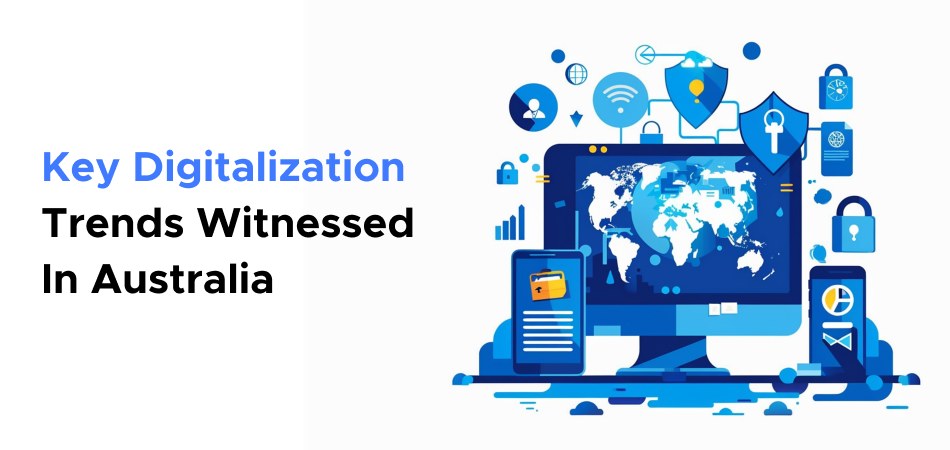
Digital Transformation Trends in Australia
Digital transformation in Australia has been gathering momentum. Its progress can be seen in different sectors as more organizations and government bodies adopt technology solutions to improve the efficiency of commercial and administrative operations and deliver advanced customer experiences. Several trends ahead depict the country’s effort to become a technology hub at the global level of the digital economy.
1. Cloud Computing and Data-driven decision making
As we have seen, cloud adoption remains on the rise in Australia. Employers in all sectors are now moving their operations online because of getting more space for their operations, versatility, and affordability. The cloud provides capacity for organizations through storing big data, which is more constant and more straightforward to analyze.
This trend helps organizations make good decisions, as they can exploit actual-time analysis of data on the buying public, trends, and organizational performance. Moreover, cloud services enable Australian companies to work in synergy, integrate workflows, and thus increase their efficiency.
2. Use of Artificial intelligence and Automation
AI & Automation are becoming more prevalent in Aussie companies. Advanced customer relations are also dominated by machine learning and chatbots, while insights and tendencies, supply changes algorithms, and support decisions are based on AI analytics. For example, in the financial industry, AI is improving fraud detection, and in the health field, AI is improving diagnosis and treatment. It also reshapes repetitive tasks at the workplace by providing high skills and automation, which releases the employees to do more value-adding activities.
3. E-commerce and Digital Retail
E-commerce in Australia has experienced a tremendous boom, especially concerning the onset of the COVID-19 pandemic. According to a recent report, Australians boosted their spending on online buying goods and services to over AUD 60 billion in 2023, culminating from earlier years’ sales statistics. As competition rises, companies increase spending on digital channels, reinforcing their online shops and upgrading buyers’ journeys.
Besides all these, retailers are exploring emerging technologies such as AR and VR to show customers what the product appears before buying it, producing an immersive shopping experience. Digital means of paying in various stores—the emergence and incorporation of contactless and mobile transactions—only make it easier for consumer convenience.
4. IoT/Industry 4.0
IoT is implemented in agriculture, manufacturing, and logistics. Real-time crop and stock monitoring are the most helpful ways of ensuring that agricultural losses are reduced and there is efficiency. Similarly, IoT devices in manufacturing collect data to optimize production lines, inventory tracking, and maintenance, leading to more efficient operations. Industry 4.0 is thus helping businesses integrate IoT devices with AI, machine learning, and robotics to create highly automated and data-driven smart factories.
5. Cyber Security and Digital Skills Development
The growing digital adoption has put Australia on high alert about cyber security. As threats have started emerging online, companies and government institutions have invested heavily in cybersecurity solutions for securing sensitive data and providing a safe digital interface. In addition, an increased demand for people with digital skills has led to the need to enhance digital competence. The Australian government and companies have invested in creating necessary training programs and activities, allowing employees to succeed professionally in the digital world.
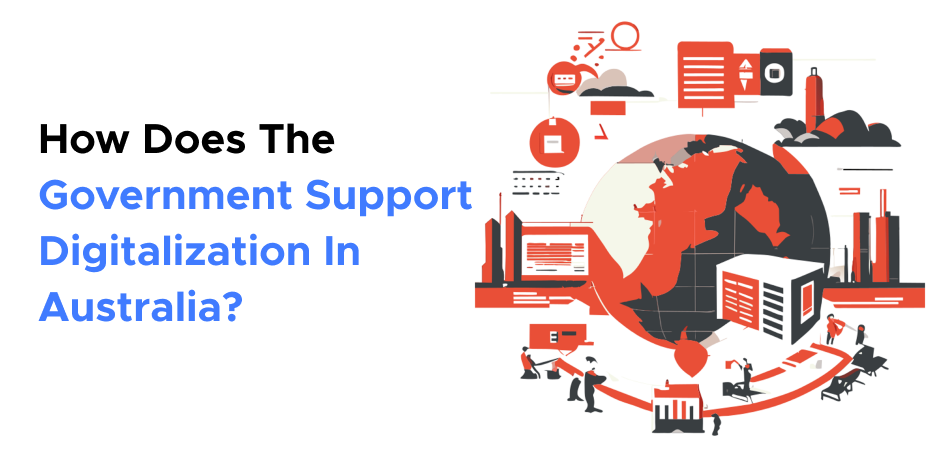
Government Support and Policies
The most prominent force behind the change is the Australian government. Through the National Innovation and Science Agenda introduced in 2015, a culture of innovativeness has been aimed at being established. Together with the DTA, it has led to the shift of the majority of government services online. Leveling up capabilities across industries, developing digital economy strategies concerning 5G, rolling out across Australia, and enhancing cloud strategies all illustrate the initiatives the Australian government is carrying out. Digital transformation in Australia is driving these efforts and shaping the future of the nation’s digital landscape.
Aside from all these measures, the Australian government has also spent considerable funds supporting the digital economy to equip various businesses, educational institutions, and healthcare providers with the tools they need to succeed in the current complex world economy. Programs like the Digital Readiness Program seek to provide small and medium enterprises (SMEs) with information technologies to expand their services locally and internationally.
In addition, the government has supported R&D in specific innovation sectors, such as AI, blockchain, and IoT. The following steps demonstrate that the Australian government wants to position Australia as a leader in a new digital economy that will extend worldwide, enhancing growth, productivity, and openness for the Australian people.
Benefits of Digital Transformation for Australian Businesses
1. Increased Efficiency and Productivity
This blog has argued that, while digital transformation has many advantages to Australian businesses, one of the most important is the increased effectiveness. These include issues with integrating fluids like cloud computing to enhance working and reduce drudgery. This makes work more manageable because the right decisions are made faster, and the right resources are allocated where they are most needed, among other benefits. By freeing up the core capabilities through automation, employees can spend more time changing strategic directions and growing the business.
2. Improved Customer Experience
Digital transformation also improves the customer experience by providing interactive, sophisticated services. Leveraging analytics technologies and intelligent solutions in business, consumer inclination, behavior, and requirements can be identified and addressed. This makes it possible to develop unique products and services and enhance specific marketing communication strategies, which can close the gap between business and customers and increase satisfaction. Further, the platforms make customers available around the clock, enabling them to be in touch with the products and services to be purchased.
3. Cost Savings and Scalability
Leaning on digital tools benefits an organization’s operations as it cuts down on the investment in physical structures and human power. For instance, most solutions work on a cloud system instead of physical servers, which may prove costly to implement on-site but can provide much flexibility and scalability. Digital transformation also makes it easy and flexible for organizations to expand activities to customers’ needs in the competitive market.
4. Greater Use of Analytical Insight
It is possible to state that digital transformation helps Australian businesses be less hesitant about whether to be innovative. As a result of big data, business intelligence, and advanced data analytics, firms can gain a real-time view of their business functioning, the environment in which they operate, and the customers. Such a data approach enables a business to know other opportunities to explore, threats to avoid, and ways to improve strategies.
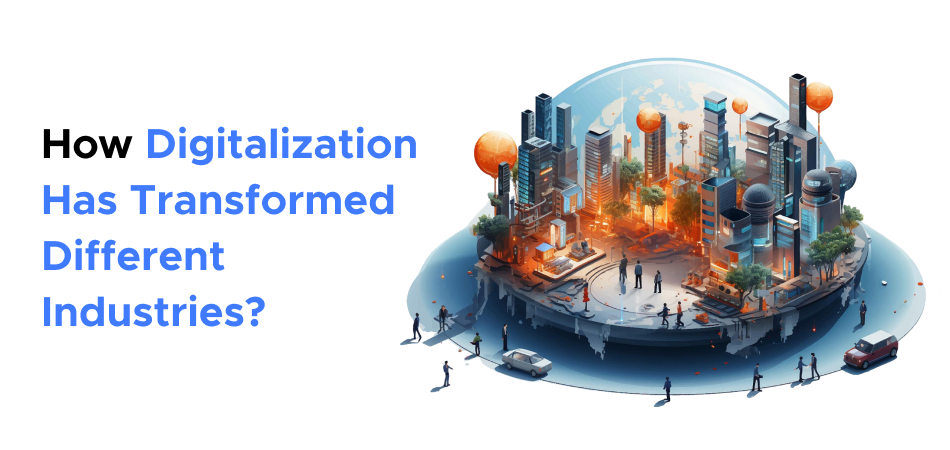
Digital Transformation In Australia’s Various Sectors
1. E-commerce and Retail
E-commerce has disrupted Australia’s retail industry in almost every respect. Consumer electronics are the consumption principle, and consumers in Australia and Canada prefer e-commerce. Indeed, Australia ranks amongst the top countries worldwide regarding internet-borne retail sales. Today, customer experience, merchandising, supply chain, and consumer base expansion depend highly on digital platforms, AI, and big data.
The current COVID-19 crisis further propelled this change. Due to the various lockdowns issued, many companies, both conventional and physical commerce entities, had to adapt to a primarily online market. Payments moved online, many services became available through the web, and many entities adopted remote consultations. Companies that failed to do the same found themselves losing their relevance. The initial response to COVID-19 only revealed that people’s desire to switch to digital solutions will not weaken in the future.
2. Fintech and Digital Payments
Fintech has also fast-tracked in Australia in the latest products, including mobile applications for banking, peer-to-peer lending, cryptocurrency trading, and contactless payments, which depict the market. CBDCs are being considered both wholesale and retail by Australian financial institutions, starting with the central bank, the RBA of Australia.
Additionally, the recent surge of mobile wallets commonly used in Australia today, such as Apple Pay or Google Pay, is changing how Australians pay for products and services. Digital banking is also likely to extend similar opportunities for financial services to people in remote places, weakening geographic barriers to conventional banking.
3. Healthcare
Digital transformation in Australia has tremendously impacted patients and service delivery systems within the healthcare sector. Telemedicine has been one of the success stories in Australia, and Virtual consultations remain an essential part of the Australian Healthcare system, especially during the COVID-19 health crisis. They allowed patients to avail of medical services without much touching them and, in the process, kept them safe from COVID-19. Digital transformation in Australia has played a key role in enhancing access to healthcare and improving the overall efficiency of medical services.
Additionally, Australia has observed note-worthlessness in using electronic health records (EHRs). My Health Record system is a government-backed project that enables Australians to keep their health data stored and available anytime. This system enhances healthcare quality by allowing the doctor to access the patient’s history and ascertain the best course of action. In addition, wearable health technology, telemonitoring, and mobile health applications enable Australians to have a quality life, manage Chronic diseases, and check vital body signs.
AI and Healthcare Innovation
Integrated AI in Australia is also improving the healthcare sector, starting from disease diagnosis, whose information is established from predictive analytics to robotic surgeries. Technological advancement, primarily through artificial intelligence, is helping doctors and nurses diagnose ailments, including cancers and heart complications. We can do much regarding Knights Landing, reducing errors, accelerating the treatment, and achieving positive results.
4. Education
Based on the research, the education sector has not been exempted from the changes arriving along with digitalization. Australian schools, colleges, and universities have embraced online learning, which provides educational resources no matter where the student is. Synchronous learning and classrooms via ICTs, video conferencing, online classes, and collaborative tools in teaching and learning have enhanced flexibility, while educational applications and game-based learning help reach the younger generations.
COVID-19 forced a great migration to the delivery of lessons over the internet, which has become more permanent in Australia. Online classes are now viewed as a component of education, with more and more universities implementing a hybrid model – both in-class and virtual.
Online Education and Learning Management
EdTech is on the rise, and Australian startups have quickly developed ideas that can make learning more engaging. With the help of AI, we can reach students’ personalization, learning speed, and learning style. This technology is most helpful to learning-disabled students as they get unique resources and information.
5. Agriculture
The agriculture sector has also embraced technology, and digitalization has significantly impacted Australia’s growth by increasing productivity while ensuring sustainable food production. The use of drones and satellite images and the development of machine intelligence, combined with detailed analytics of mockups, provides farmers with opportunities for a fine-tuned approach to the conditions on the ground, including climate conditions and crop yields, and an enhanced method of working with irrigation systems. This leads to increased productivity, reduced wastage costs, and increased utilization of scarce resources.
AgTech and Smart Farming
One of the segments experiencing a profound digital disruption is AgTech or agricultural technology. Emerging technology, including precision farming, self-driving tractors, and animal identification solutions, is helping farmers increase yield while exercising sustainable methods. Satellite connectivity and IoT hardware, such as sensors in large and remote agricultural areas of Australia, are also making a difference, enabling real-time decision-making because of the accumulation of data.
6. Energy and Environment
Digital technologies are disrupting the business of generating and providing energy to the nation of Australia. Modernized distribution networks, the integration of renewable power, and other energy-efficient technologies have made energy consumption more sustainable. As more and more citizens and companies in Australia embrace solar and wind energy, the direction is being given to digital means for the supply and the energy demand.
The Circular Economy and Furthering the Smart Cities Concept
Australia’s major cities are moving toward Smart cities, which use digital technologies to enhance urban existence. Implementing IoT technology, sensors, and real-time data advances Melbourne, Sydney, and Brisbane in every aspect, from traffic control to garbage disposal. Thus, the shift to smart cities is enhancing the management, increasing the productivity of urban space, and introducing environmentally friendly solutions against emissions and energy use.
Potential Issues of Digitalization for the Australian Context
However, digitalization also comes with many opportunities that have implications that Australia needs to overcome to attain proper digital transformation that welcomes all.
1. Digital Divide
The most relevant issue is quite an obvious one—the digital divide. While cities are well connected by high-speed internet and have access to advanced digital services, they are unavailable in rural and remote areas. Australia’s large land area and limited regional infrastructural development deepen this divide. Broadband expansion plans are under consideration, and it can be seen that rural populations won’t be left behind in the latest connectivity drive. Digital transformation in Australia is focusing on bridging this gap and ensuring equitable access to digital services across the nation.
2. Cybersecurity Concerns
Due to modern developments, the digitization process has advanced in the last couple of years, meaning the probability of a cyber attack is higher. Some critical sectors of the Australian economy, like the health sector, parts of the financial system, and some quarters of the government bureaucracy, are now open to hacking.
Like many other nations, Australia has suffered several massive cyber attacks in recent years, resulting in increased focus on standard and effective cybersecurity mechanisms. As has been seen earlier, people and companies must be careful about how their information is protected, and the government is funding Australian cyber security programs to safeguard Australian users from cyber threats.
3. Privacy and Data Security
Digitalization also means that enormous amounts of data are recorded. Safeguarding this information is becoming an issue of significant concern in Australia, with people and companies offering sensitive information online. While using APPs and CDRs is a sign of improvement in protecting personal data, it is also important to note that there are still many problems with protecting personal information.
4. Job Loss Impact and Skills Deficit
Nowadays, digitalization is changing job markets in Australia, but it raises questions about workplace automation. Computerization, artificial intelligence, and robotics are changing standard job profiles, especially in production industries and supply chains. New jobs are being created in technology and digital services, but companies are also struggling to determine whether to offer employee reskilling opportunities.
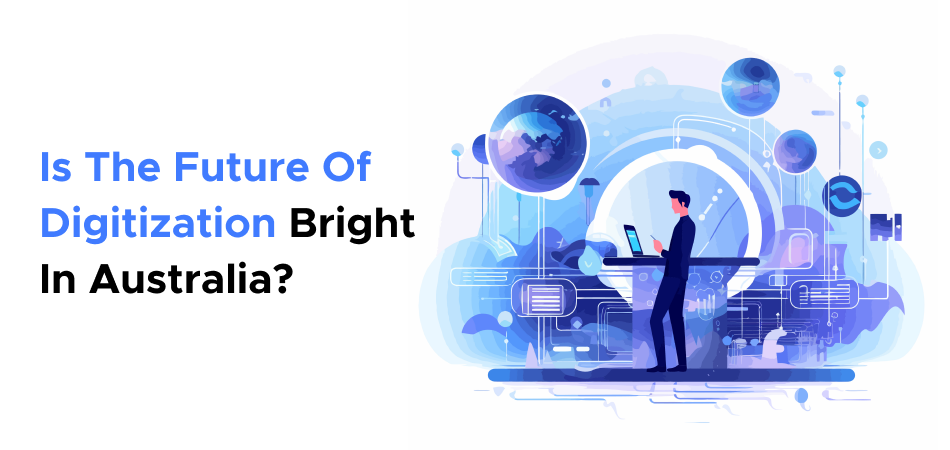
The Future Outlook: Australia in a Digital Age
Therefore, it is instigative to envision Australia’s future, which is caused by the increase in digitalization. The development of mobile infrastructure and new networks is already in progress, and the continuous expansion of 5G networks will improve mobile interaction and extend the potential for several sectors, such as health care, transportation, and entertainment. The four emergent technologies, namely quantum computing, artificial intelligence, and blockchain, will offer new areas of development; smart cities will also improve urban lifestyles.
1. Measures taken by the government and the role of car makers
The Australian government’s continual promise of digitalization measures and partnerships between government and private parties make it possible for Australia to sustain its future competitiveness in the global digital economy. Many of these include new technologies such as Fintech, Healthcare, and renewable energy technologies as key innovations driving developments in the future.
2. Inclusive Digital Future
Australia’s digital future cannot simply be some imaginary utopia where only some regions and demographics of the population will have some privileges of living in the future. The threat also includes the risks associated with the ability to bridge the digital divide, promote and fund digital literacy, and develop sound cybersecurity.
3.Digitizing Economy
As Australia gradually transforms into a digitally-based economy, innovation will likely be a key driver to future economic growth. At such a time, as countries leap with emerging technologies, including AI, machine learning, and blockchain, Australia can leap further to enhance productivity and usher in new business models.
Manufacturing, agriculture, and healthcare businesses will benefit from digital streams that help reduce waste through efficient operations and improve customer experiences. For one, AI-driven automation coupled with data analytics enables business efficiency. Still, blockchain technology has the significant potential to revolutionize supply chain transparency and security. Because these innovations are taking over, Australia’s economy shall be diversified, agile, and competitive on the global stage.
4. Promoting Global Digital Leadership
Investment in digital transformation, too, is preparing the country for Australia to stand as a leader in global digital economies. Australia also has a promising future because, with evolving digital technology, it will participate in international cooperation and collaborations to sustain the trend of globalization.
Whether through joint ventures with leading companies in the tech space or international research initiatives on quantum computing and renewable energy, Australia has positioned itself as an active player in shaping the future of digital innovation. By fostering a place for digital startups and research, Australia has a strong chance of attracting top talent and global investment toward becoming a hub of technological advancements that will affect many industries worldwide.
Conclusion
Technologization is not an ’emerging theme’ in Australia – it is a pervasive reality across most industries. Across all sectors of life in Australia, digital technology is rapidly changing economic activity and fundamental aspects of daily life, including health, education, farming, and power. This is why modern organizations like 7 Pillars, a brilliant app development company, provide solutions for changing the existing business paradigm.
However, the following challenges exist: the digital divide and cyber security risks. Still, the opportunities here are endless. Through collaborations with such experts, businesses can guarantee that they stick to the correct standard and facilitate inclusive digital development to help Australia excel in the digitized world. Although 7 Pillars is on the front lines of this transformation, it remains the provider of state-of-the-art app solutions for a digital future. Digital transformation in Australia plays a pivotal role in shaping these opportunities and overcoming the challenges faced.
Australia’s digital transformation means that companies must find ways to improve operations and productivity through techniques that can be scaled up. 7 Pillars is a top app development firm that continues to deliver these solutions, developing bespoke apps that increase efficiency and provide good UI/UX.
With the help of the latest innovations like artificial intelligence, cloud technology, and the IoT, 7 Pillars is helping businesses in Australia to excel more in the current digital economy. Full of inspiration and dedication, 7 Pillars ensures that Companies can effectively manage Digital wrangles, opportunities, and adaptabilities in the new digital world, speeding up the way for Australia to go fully digital. Connect with our team today at 7 Pillars to begin your digital journey.








